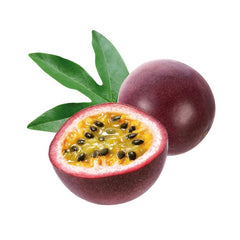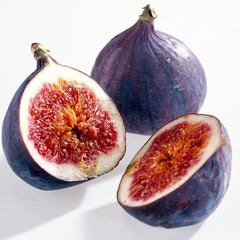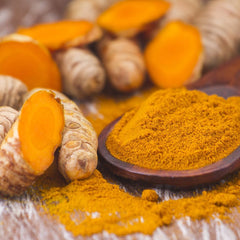What is an Oud Perfume?
Click For Affordable Inspired Perfume Alternatives
Oud perfume has gained immense popularity in recent years, captivating fragrance enthusiasts worldwide with its rich, complex aroma. Known for its luxurious and deep scent profile, oud has become a staple ingredient in high-end perfumes and a symbol of elegance and sophistication. But what exactly is oud perfume, and what makes it so special? In this article, we'll explore the origins, characteristics, and significance of oud perfume, helping you understand why it continues to enchant fragrance lovers across the globe.
What is an Oud Perfume?
Oud perfume, also known as agarwood perfume, is a fragrance that prominently features oud as a core ingredient. Oud is a resinous, dark, and aromatic substance derived from the heartwood of the Aquilaria tree, which is native to Southeast Asia, India, and parts of the Middle East. When the Aquilaria tree becomes infected with a specific type of mold, it produces a dark, fragrant resin to protect itself, resulting in the formation of oud.
The scent of oud is often described as woody, warm, and slightly sweet, with complex nuances that can include hints of spice, earthiness, and even smoky undertones. Oud's unique aroma has been highly valued for centuries in Middle Eastern, Indian, and Southeast Asian cultures, where it has been used in traditional ceremonies, incense, and perfumes. Today, oud has become a symbol of luxury and exclusivity in the contemporary perfume industry, embraced by both men and women for its distinctive and enduring scent.
The Origins and Cultural Significance of Oud
Oud's history dates back thousands of years, making it one of the oldest known raw materials used in perfumery. Its cultural significance is deeply rooted in Middle Eastern traditions, where it has been treasured as a precious commodity. The use of oud in perfumery and incense can be traced to ancient civilizations like Egypt, Persia, India, and the Arabian Peninsula.
In these cultures, oud was considered more than just a fragrance; it was a symbol of spirituality, wealth, and status. It was used in religious ceremonies, royal courts, and as a personal adornment. The rarity of high-quality oud, along with the labor-intensive harvesting process, has historically made it a luxury item reserved for royalty and aristocrats.
Today, the global appreciation of oud continues to grow, transcending cultural boundaries and becoming a prominent ingredient in modern perfumery. Its association with luxury and tradition has contributed to its reputation as the "perfume of kings."
The Composition of Oud Perfume
Oud perfume is characterized by its complex and layered scent profile. While the primary note is oud itself, perfumers often blend it with a variety of other ingredients to create balanced, versatile fragrances. Here are some key components and considerations in oud perfumes:
- Oud Accord: The core of the fragrance, often a concentrated extract or a synthetic version that mimics natural oud.
- Woody Notes: Sandalwood, cedarwood, and agarwood are commonly used to enhance the woody depth.
- Resins and Balsams: Myrrh, frankincense, and benzoin add richness and warmth.
- Spices: Cinnamon, cardamom, and saffron can introduce spicy, exotic accents.
- Floral Notes: Rose, jasmine, and orange blossom are sometimes included to add a touch of freshness and elegance.
- Fruity or Citrusy Notes: Bergamot, mandarin, or other citrus elements may be added for brightness.
The result is a fragrance that can range from intensely smoky and woody to subtly sweet and balsamic, depending on the perfumer's artistry and the intended audience.
Types of Oud Perfume
Oud perfumes come in various forms, each offering a different experience based on concentration, formulation, and application. Here are some common types:
- Oud Extract (Eau de Parfum or Parfum): The most concentrated form, offering a rich and long-lasting scent. Typically contains a high percentage of oud oil.
- Oud Eau de Parfum (EDP): Slightly lighter than pure oud extract but still maintains a strong presence, suitable for daily wear.
- Oud Eau de Toilette (EDT): Lighter and more volatile, often used for casual or daytime occasions.
- Oud Incense or Bakhoor: Used in burning or diffusing to create an ambient oud aroma in homes and spaces.
-
Oud-infused Products: Such as body oils, lotions, and candles, which carry the scent in a more subtle way.
Choosing the right type depends on personal preference, occasion, and the desired intensity of the fragrance.
How to Identify Authentic Oud Perfume
Due to the high value and demand for oud, the market has seen an increase in synthetic and imitation products. Here are some tips to help identify genuine oud perfumes:
- Price: Authentic oud is expensive due to the labor-intensive harvesting process and rarity. Extremely low prices may indicate synthetic or adulterated products.
- Source: Purchase from reputable brands or trusted retailers known for quality oud fragrances.
- Fragrance Quality: Genuine oud has a rich, complex aroma that evolves over time. Synthetic oud may smell flat or overly uniform.
- Labeling and Packaging: Authentic products often include detailed information about the concentration, ingredients, and origin.
- Longevity and Sillage: Real oud tends to have a long-lasting scent with a noticeable presence on the skin.
Understanding these factors can help you make an informed choice and enjoy the true essence of oud in your perfume collection.
How to Wear Oud Perfume
Oud fragrances are versatile and can be worn in various ways depending on the occasion and personal style. Here are some tips for wearing oud perfume:
- Apply sparingly: Oud has a strong presence; a little goes a long way. Start with a small amount to avoid overwhelming your surroundings.
- Pulse points: Apply to wrists, neck, and behind the ears to maximize projection and longevity.
- Layering: Combine with lighter scents or body oils for a personalized fragrance experience.
- Occasion: Richer, more intense oud perfumes are suited for evening wear or special occasions, while lighter versions can be worn during the day.
- Season: Oud is ideal for cooler months due to its warm and woody profile, but lighter blends can work in spring or fall.
Experimenting with application techniques and pairing can elevate your oud fragrance experience and make it uniquely yours.
Conclusion: Embracing the Essence of Oud
Oud perfume embodies a rich heritage of luxury, tradition, and artistry. Its deep, complex aroma captures the imagination and evokes a sense of sophistication and mystique. Whether you are a seasoned fragrance enthusiast or a curious newcomer, understanding what oud perfume is and its cultural significance enriches your appreciation for this extraordinary ingredient.
As the world continues to embrace the allure of oud, more innovative and captivating fragrances emerge, offering new ways to experience its timeless charm. Investing in a genuine oud perfume can be a transformative addition to your collection, allowing you to carry a piece of centuries-old tradition with every wear.
Ultimately, oud perfume is more than just a scent—it's a journey into history, culture, and craftsmanship, making it a truly luxurious and unforgettable olfactory experience.
Buy Perfumes - Best Online Retailers
Click For Affordable Inspired Perfume Alternatives
Click For The Best Niche Perfumes & Decants
Pheromone Perfumes - Confidence, Attraction & Appeal - Click For More
Home Fragrances & Candle Warmers - Click To Scent Up Your Spaces Today!



